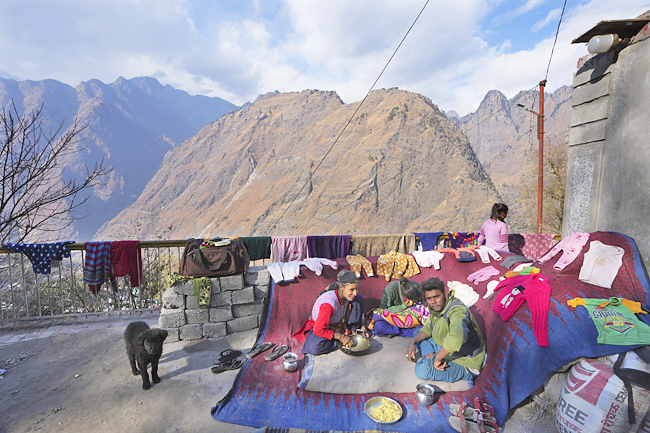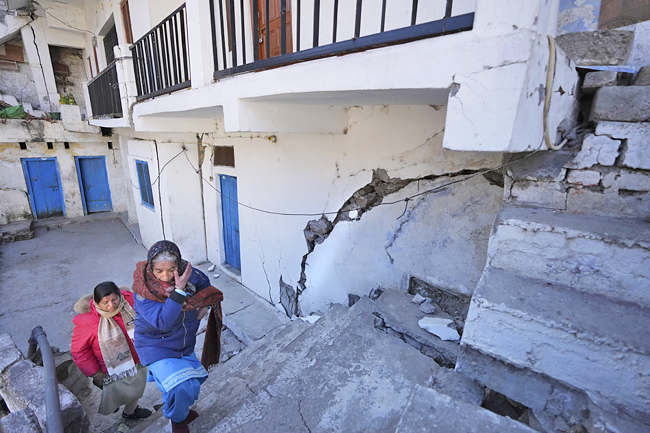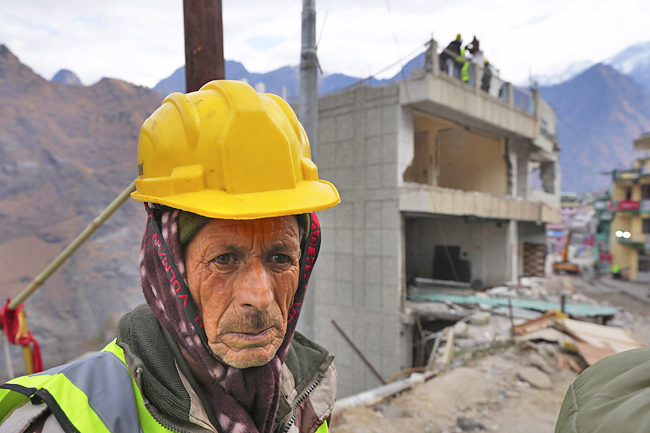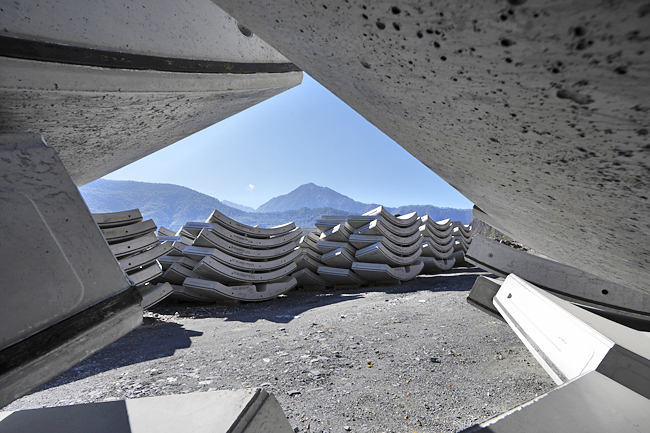JOSHIMATH, INDIA (AP) – Inside a shrine overlooking snow-capped mountains, Hindu priests heaped spoonfuls of puffed rice and ghee into a crackling fire. They closed their eyes and chanted in Sanskrit, hoping their prayers would somehow turn back time and save their holy – and sinking – town.
For months, the roughly 20,000 residents in Joshimath, burrowed in the Himalayas and revered by Hindu and Sikh pilgrims, have watched the earth slowly swallow their community. They pleaded for help that never arrived, and in January their desperate plight made it into the international spotlight.
But by then, Joshimath was already a disaster zone. Multistoried hotels slumped to one side; cracked roads gaped open. More than 860 homes were uninhabitable, splayed by deep fissures that snaked through ceilings, floors and walls. And instead of saviours they got bulldozers that razed whole lopsided swaths of the town.
The holy town was built on piles of debris left behind by years of landslides and earthquakes. Scientists have warned for decades, including in a 1976 report, that Joshimath could not withstand the level of heavy construction that has recently been taking place.
“Cracks are widening every day and people are in fear. We have been saying for years this is not just a disaster, but a disaster in the making… it’s a time bomb,” said an activist with the Save Joshimath Committee Atul Sati.




Joshimath’s future is at risk, experts and activists say, due in part to a push backed by the prime minister’s political party to grow religious tourism in Uttarakhand, the holy town’s home state. On top of climate change, extensive new construction to accommodate more tourists and accelerate hydropower projects in the region is exacerbating subsidence – the sinking of land.
Located 1,890 metres above sea level, Joshimath is said to have special spiritual powers and believed to be where Hindu guru Adi Shankaracharya found enlightenment in the 8th Century before going on to establish four monasteries across India, including one in Joshimath.
Visitors pass through the town on their way to the famous Sikh shrine, Hemkund Sahib, and the Hindu temple, Badrinath.
“It must be protected,” said a local priest Brahmachari Mukundanand who called Joshimath the “brain of North India” and explained that “Our body can still function if some limbs are cut off. But if anything happens to our brain, we can’t function.… Its survival is extremely important.”
The town’s loose topsoil and soft rocks can only support so much and that limit, according to environmentalist Vimlendu Jha, may have already been breached.
“You can’t just construct anything anywhere just because it is allowed,” he said. “In the short term, you might think it’s development. But in the long term, it is actually devastation.”
At least 240 families have been forced to relocate without knowing if they would be able to return.
Prabha Sati, who fled Joshimath in a panic last month when her home began to crack and tilt, came back to grab the television, idols of Hindu gods and some shoes before state officials demolished her home.
“We built this house with so much difficulty. Now I will have to leave everything behind. Every small piece of it will be destroyed,” she said, blinking back tears.
Authorities, ignoring expert warnings, have continued to move forward with costly projects in the region, including a slew of hydropower stations and a lengthy highway. The latter is aimed at further boosting religious tourism, a key plank of Prime Minister Narendra Modi’s Bharatiya Janata Party.
In 2021, Modi promised a prosperous decade ahead for Uttarakhand. It is dotted with several holy shrines and improving the state’s infrastructure has already led to a steady rise in pilgrims over the decades. Nearly 500,000 passed through Joshimath in 2019, state data shows.
“In the next 10 years, the state will receive more tourists than it did in the last 100 years,” Modi said.
A big Uttarakhand tourism draw is the Char Dham pilgrimage, one of the toughest in India.
The route takes people to four, high-altitude Hindu temples. Pilgrims traverse challenging terrain, dropping oxygen levels and harsh weather between Badrinath, Gangotri, Kedarnath and Yamunotri temples. In 2022, over 200 out of the 250,000 pilgrims died while making the journey. Authorities said the rise in visitors was straining existing infrastructure.
Already underway, the Char Dham infrastructure project, aims to make the journey more accessible via a 10-metre wide and 889-kilometre long all-weather highway as well as a 327-kilometre railway line that would crisscross through the mountains.
It is a controversial project with some experts saying it will exacerbate the fragile situation in the upper Himalayas where several towns are built atop landslide debris.
Veteran environmentalist Ravi Chopra called the project a desecration when he resigned from a court-ordered committee studying its impact. To create such wide roads, engineers would need to smash boulders, cut trees and strip shrubbery, which he said will weaken slopes and make them “more susceptible to natural disasters”.
Urban planning expert Kiran Shinde suggested a pedestrian corridor instead, noting these places were never meant for cars nor crowds numbering in the hundreds of thousands.
“The highway is the most disastrous thing to happen to the Char Dham,” said Shinde, a professor at Australia’s La Trobe University who has written on religious tourism. “Let people walk.”
Cracks continue to form. Located near a rail line construction site, Sangeeta Krishali’s home in Lachmoli, about 100 kilometres from Joshimath, has them. She fears for her safety: “It happened there, it can happen here, too.”
In Joshimath’s foothills, construction was paused on a road for the Char Dham project that would ferry tourists faster to the Badrinath temple after cracks emerged in people’s homes.
Locals feared it was too late. A long, jagged crack running across one of the front walls in the famed Adi Shankaracharya monastery had deepened worryingly in recent weeks, said one of the priests Vishnu Priyanand.





